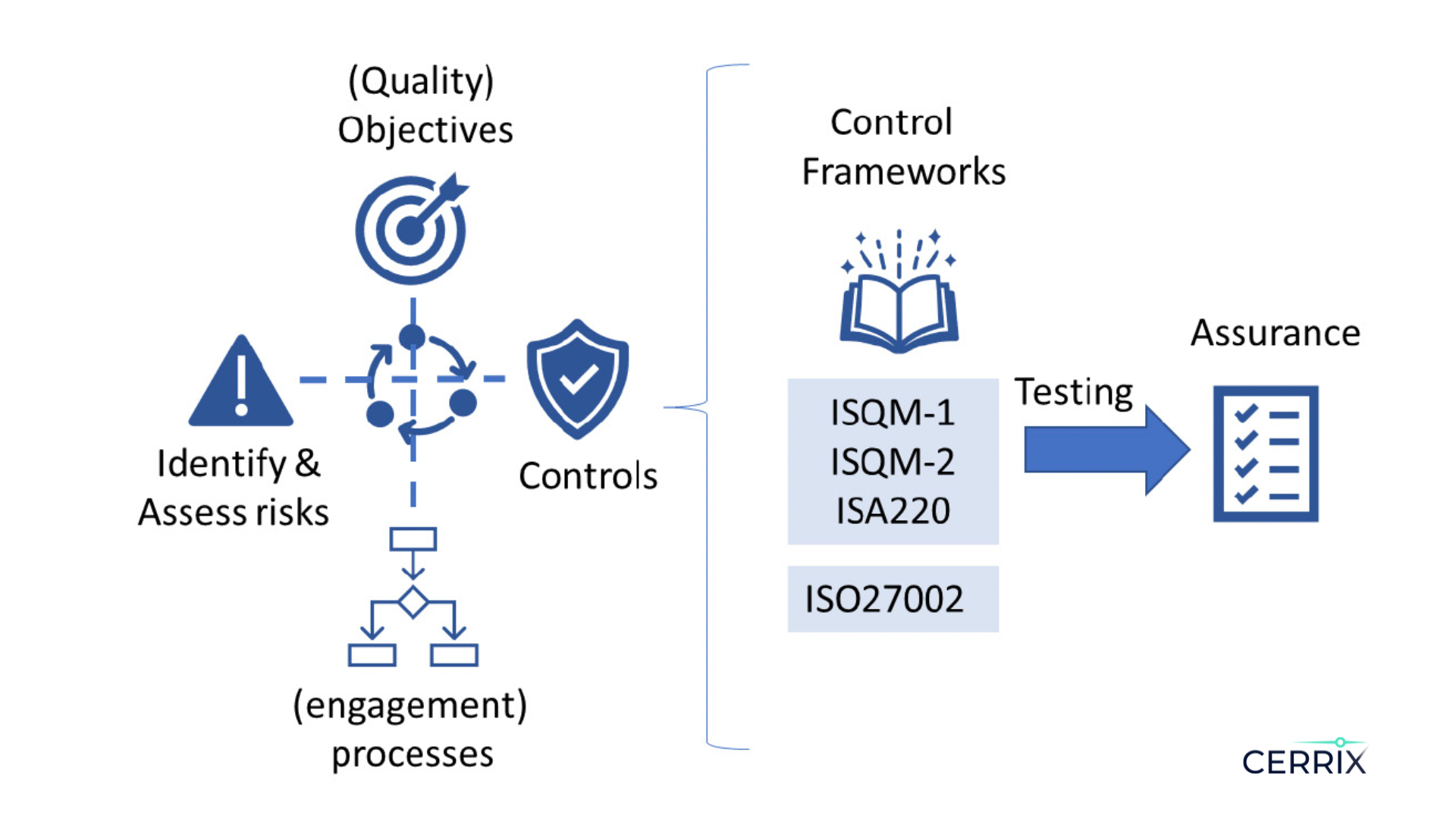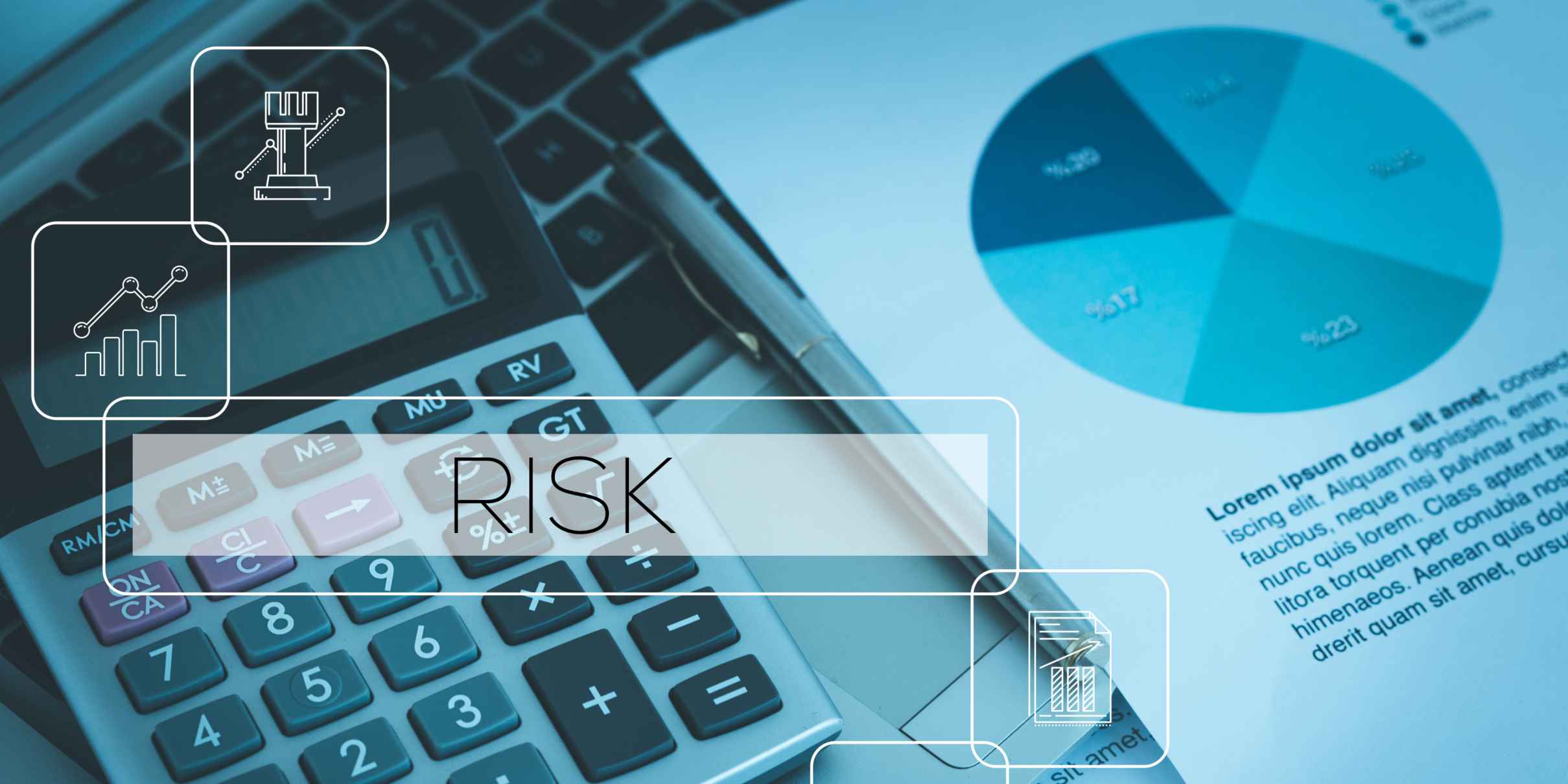ISQM 1 requires audit firms to move from a static quality control model to a dynamic quality management system. But writing a manual is not the same as having a system that works. A true System of Quality Management (SoQM) turns compliance requirements into repeatable processes supported by data, technology, and governance. When done right, it shifts quality from being a cost of compliance to a driver of resilience and trust.
Understanding systems of quality management under ISQM 1
At its core, ISQM 1 asks firms to establish objectives, identify risks that threaten those objectives, implement controls, and monitor whether those controls are effective. This creates a continuous cycle of improvement rather than a once-a-year checklist.
A working SoQM does three things consistently:
- Captures quality risks where they actually occur—in processes, engagements, and governance.
- Links risks to clear controls, owners, and evidence.
- Uses monitoring, incidents, and improvement actions to keep the system alive.
Without this systemic approach, ISQM efforts risk becoming fragmented documents that auditors cannot rely on.
What makes ISQM 1 different from ISQC 1?
Under ISQC 1, firms relied on a prescriptive set of controls. ISQM 1 instead introduces a risk-based approach, requiring every firm—large or small—to tailor its quality objectives and responses to its own size, services, and clients.
This means:
- No two firms will have identical systems. A boutique audit practice may design leaner processes than a Big Four firm, yet both must show risks are addressed.
- Both design and operation matter. Controls must be well-designed and proven to work in practice.
- Continuous monitoring is required. Quality can’t be reviewed once a year; it must be tracked as a living system.
How do you operationalize ISQM 1?
Turning ISQM 1 into practice means creating a repeatable cycle that everyone in the firm understands and follows. Think of it as moving from a static manual to a living system:
- Set quality objectives – Start by defining what “quality” really means for your firm. For some, it’s audit efficiency and client trust; for others, it may also include meeting sector-specific regulatory expectations. Clear objectives give direction to everything else.
- Identify and assess risks – Consider what could prevent those objectives from being achieved. For example, staff turnover might undermine audit quality, or weak IT access controls could compromise independence. This step ensures risks are tied directly to your firm’s reality.
- Design and implement controls – Each risk requires a tailored response. That could mean introducing training requirements, adding peer reviews for high-risk clients, or implementing automated access reviews. Controls should be practical, owned by the right people, and documented.
- Monitor and test – ISQM requires not just designing controls, but proving they work. This includes periodic testing, root cause analysis when failures occur, and using incidents as learning opportunities.
- Take remedial action – A working SoQM doesn’t hide weaknesses—it improves them. Documenting failures, assigning corrective actions, and tracking whether improvements stick ensures the system matures over time.

Technology like CERRIX embeds this cycle into daily workflows, automating reminders for control owners, centralizing evidence, and linking risks, incidents, and improvements together.
What are common mistakes to avoid in ISQM implementation?
Despite good intentions, many firms stumble in similar ways:
- Treating ISQM as a documentation exercise – Drafting policies may tick a box, but regulators want proof of effectiveness. Without evidence of real control testing, your SoQM won’t stand up to scrutiny.
- Relying on spreadsheets – Excel may feel easy at first, but it can’t provide version control, audit trails, or workflow accountability. Firms often discover too late that it leaves them exposed during inspections.
- Overloading the second line of defense – Risk and compliance teams can guide and monitor, but they can’t “own” audit quality. If accountability doesn’t sit with engagement leaders and service line heads, quality won’t be embedded.
- Failing to link incidents and improvements back to risks – When an inspection finds an error or a control fails, the system must adapt. A true SoQM learns from these signals by updating risks, adjusting controls, and monitoring remediation.
Avoiding these mistakes requires treating ISQM as an ongoing process, not a one-off compliance project.
How do you measure if your system is working?
A system of quality management is only effective if you can demonstrate that it actually improves outcomes. That means defining and tracking metrics that go beyond “compliance checklists”:
- Control test coverage – Are you testing a representative sample of controls, or just a fraction? Coverage rates show how much assurance you can really place on your system.
- Exception rates – Look at how often controls fail, are skipped, or are overdue. A high exception rate may point to unrealistic processes or poor ownership.
- Incident trends – Do incidents repeat? How quickly are they remediated? Root cause analysis should reveal whether weaknesses are one-offs or systemic.
- KRI/KPI monitoring – Key risk indicators (e.g., staff utilization, independence breaches, overdue file reviews) can provide early warning signals before risks escalate.
The most effective firms consolidate these metrics into a centralized risk & control register. This creates a single source of truth where risks, controls, incidents, and test results are all linked and auditable. Dashboards and drill-down reports then turn the data into actionable insights for partners, risk committees, and regulators. Instead of a static report once a year, firms can continuously demonstrate that quality is not only designed but proven in practice.

Key takeaways for building a SoQM that delivers value
ISQM 1 is not about more paperwork. It’s about creating a living quality system that is risk-based, evidence-driven, and continuously improving. Firms that operationalize ISQM 1 effectively will benefit from:
- Greater trust from regulators and clients
- Lower audit risk and remediation costs
- More efficient processes and less manual burden
- A culture where quality is owned across the firm, not delegated to compliance
At CERRIX, we help audit firms transform ISQM 1 requirements into an integrated system of quality management. With automated workflows, real-time monitoring, and audit-ready reporting, our platform makes quality measurable and manageable. Watch our on-demand webinar Everything You Need to Know About Implementing ISQM in Audit Firms.
Download your guide for ISQM implementation within Audit firms
Accessible popup
Welcome to Finsweet's accessible modal component for Webflow Libraries. This modal uses custom code to open and close. It is accessible through custom attributes and custom JavaScript added in the embed block of the component. If you're interested in how this is built, check out the Attributes documentation page for this modal component.

.jpg)
.jpg)
%20(1).jpg)
%20(1).jpg)
.jpg)
.jpg)
.jpg)
.jpg)
%20(1).jpg)
.jpg)
.jpg)
.jpg)

.jpg)






%20(1).avif)



